Home Security Cameras vs. Baby Monitors Comparison
| Aspect | Home Security Cameras | Baby Monitors |
|---|---|---|
| Functionality | Monitor and record indoor/outdoor activity, detect motion, provide video evidence. | Audio and video monitoring of baby, detect motion and sound in the baby's room. |
| Key Features | HD video, night vision, motion detection, mobile app access, cloud/local storage, smart home integration. | Two-way communication, night vision, temperature sensor, long range, portability. |
| Benefits | Deter burglars, remote monitoring, video evidence, motion alerts, wide viewing angles, two-way audio. | Continuous monitoring, alerts, portability, two-way communication, nursery conditions monitoring, lullabies. |
| Potential Limitations | Privacy concerns, internet dependency, higher upfront costs, subscription fees, complex installation. | Limited range, battery life, Wi-Fi interference, potential security flaws, complexity, false alarms. |
| Cost | Higher initial cost, potential monthly fees for cloud storage and features. | More affordable, no ongoing fees for standard models. |
| Installation | Potentially complex, may require professional help. | Generally simple and quick, user-friendly. |
| Privacy | May capture more private family activities, raising privacy issues. | Limited to baby's room, designed for parental monitoring. |
Introduction
Home security and child safety are top priorities for most families. Technology now provides advanced solutions to help protect what matters most - your home and loved ones. Both home security cameras and baby monitors offer ways to keep watch over your family's well-being. However, these devices have key differences in their features and intended uses.
This in-depth guide will compare home security cameras versus baby monitors. We'll examine the unique benefits and potential limitations of each. Understanding these key distinctions will help you determine which device best fits your family's needs and budget. Read on to make the most informed choice to enhance security and peace of mind in your home.
What Are Home Security Cameras?
Home security cameras are systems designed to monitor activity and record footage around the interior and exterior of your home. They consist of one or more camera units linked to a recording device and an app for remote access.
Different types of home security cameras include:
- Indoor cameras - Monitor activity inside the home, entryways, hallways
- Outdoor cameras - Watch outdoor areas like driveways, yards, porches
- Doorbell cameras - Camera embedded in doorbell to see visitors
- WiFi and wired cameras - Connect via the home's wireless network or cables

Key Features of Most Home Security Cameras Include:
- HD video quality with night vision - Capture events in high resolution, even in low light
- Motion detection triggers - Sends alerts when movement is detected in view
- Mobile app access - Livestream and footage playback from your smartphone
- Cloud and local storage - Stores footage either remotely or on a storage device
- Smart home integration - Connect with other smart devices and systems
Benefits of Home Security Cameras
Installing home security cameras provides several advantages:
- Monitor indoor and outdoor areas - Keep watch over multiple rooms, entry points, yards
- Deter potential burglars - Visible cameras can discourage break-ins
- Remote access for monitoring - Check live feeds and recorded video from anywhere
- Collect video evidence - Have footage to provide police in case of a break-in.
- Notifications of activity - Get alerts about detected motion or doorbell rings
- Wide viewing angles - Panoramic views reduce blindspots
- Two-way audio - Communicate through the camera with visitors
- Custom motion zones - Only get notified about activity in designated areas
Potential Limitations of Home Security Cameras
While very useful, home security cameras also come with some downsides to consider:
- Privacy concerns - Cameras recording on your property raises privacy issues
- Internet issues cause disruptions - Cameras and apps rely on steady connectivity
- Upfront costs - Packages with multiple cameras and hardware have higher initial costs
- Ongoing subscription fees - Cloud storage and advanced features require monthly fees
- Installation complexity - Hardwired systems require professional installation
- Power source required - Battery-powered cameras must be regularly recharged
What Are Baby Monitors?
Baby monitors allow you to see and hear your baby from another room or location in your home. Basic types include:
- Audio monitors - Pick up only sounds from your baby's room
- Video monitors - Feature a camera to see your baby in their crib/bed
- Movement monitors - Sense motion signaling baby is awake or distressed

Common Features Found in Many Baby Monitors:
- Two-way communication - Soothe your baby by talking through the monitor
- Night vision - See baby even in a dark nursery
- Temperature sensors - Alert you if the room gets too hot or cold
- Long range - Hear/see baby from different levels of the home
- Portability - Small monitor units to carry around the house
Benefits of Baby Monitors
There are good reasons baby monitors are a nursery staple for most parents:
- Continuous monitoring - Keep an eye and ear on napping or sleeping babies
- Get alerts if baby needs you - Hear cries or see unusual movements signaling distress
- Roam around your home - Carry a portable unit or use extended-range models
- Communicate with your baby - Soothe them with your voice through two-way communication
- Assess the nursery conditions - Monitor temperature, humidity, air quality
- Play lullabies - Some models play music to calm your baby
- Extra portability outdoors - Take wireless units to the yard, garage, deck
Potential Limitations of Baby Monitors
While extremely helpful, baby monitors aren't perfect. Be aware of a few potential drawbacks:
- Limited range - Audio and weaker models may not cover the whole home
- Battery life issues - Cordless monitors rely on being recharged
- WiFi interference - Connectivity disruptions if the internet is spotty
- Sound and video disruption - Devices like microwaves can cause interference
- Potential security flaws - Digital eavesdropping is a rare but real risk
- Too many features - Overly complex monitors aren't user-friendly
- False alarms - Sensitivity settings may need occasional adjustments
Comparing Home Security Cameras and Baby Monitors
Now, let's directly stack up home security cameras versus baby monitors on their key attributes:
Functionality
While both monitor home activity, their scope and purpose differ:
- Security cameras continuously record to track all indoor/outdoor activity
- Baby monitors zero in only on the limited view of a crib or bedroom
- Security cameras alert to any motion for security and evidence
- Baby monitors only alert to sounds/motions from the baby
Privacy
Privacy is a concern with both but differs in scope:
- Security cameras inherently capture more private family activities indoors
- Baby monitors only broadcast a child's room and are designed just for parents to hear
Cost
Both require an initial purchase and may incur ongoing fees:
- Multi-camera home security systems have a higher upfront cost, from $60 up to $500+
- Basic baby monitors start very affordable, under $50, while advanced options go up to $200+
- Security systems often require cloud storage subscriptions for features and storage
- No ongoing fees are generally associated with standard baby monitors
Ease of Use and Installation
- Security cameras may require professional installation and more involved setup
- Plug-in baby monitors are very quick and simple for parents to configure
- Security camera systems take time to learn controls and settings
- Baby monitor basics are intuitive, allowing for quick out-of-box use
Choosing What Is Right for Your Family
Home security cameras and baby monitors serve distinct purposes. Which one is the best choice depends on your family's needs and home setup.
Take time to assess your specific needs and home layout. This will dictate whether a multi-camera security system makes the most sense or a plug-and-play baby monitor suits your purposes. If your needs are focused on your baby, go with a thoughtfully designed monitor that provides the connectivity, features, and reliability you require. Install a feature-packed security camera system if you want whole-home coverage to act as a deterrent and record events. For many families, having a baby monitor for the nursery and security cameras covering other areas is ideal for robust protection. Click to get more tips: Baby Monitor Camera: The 2022 Complete Guide For Parents.
Conclusion
While both enhance home monitoring and safety, security cameras and baby monitors excel in different functions. Consider your family's needs to decide if continuous security footage, focused streaming of your baby's room, or a combination system works best.
Advanced models can certainly get expensive. However, excellent budget options exist in both categories to meet all needs and budgets. With the right choice made after careful consideration, you can enjoy peace of mind knowing your family and home are protected.
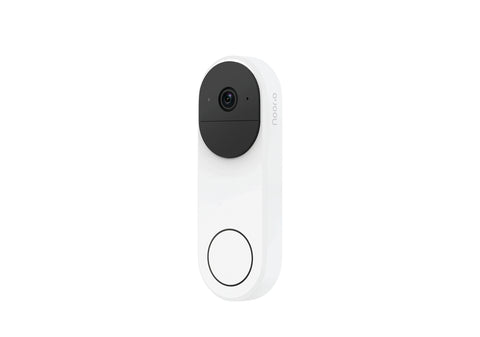
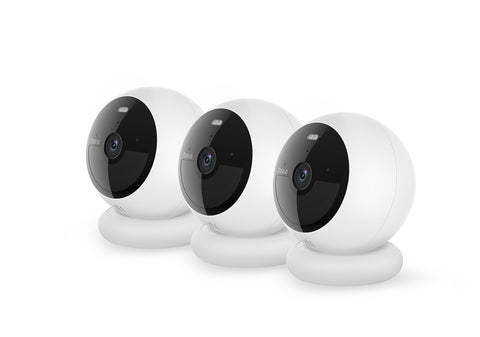
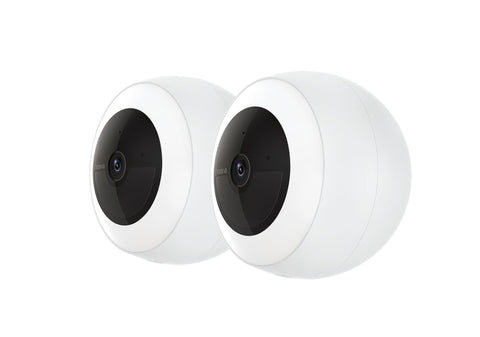
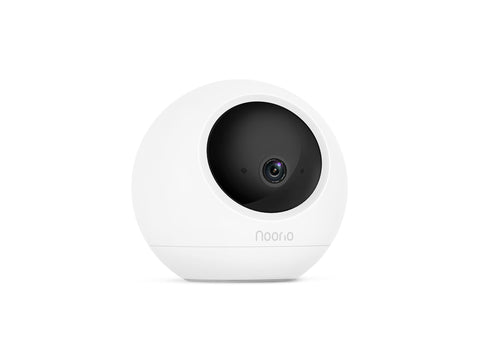
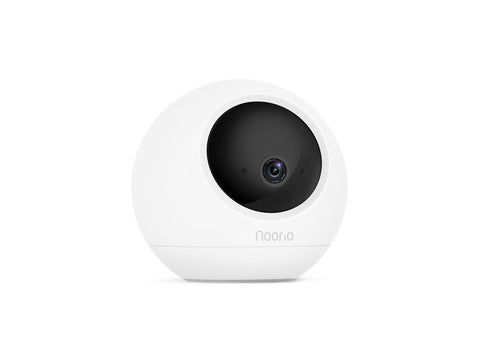







1 commento
I have the installation manual for a T110 camera I was wondering if there’s a tutorial on how to actually use the camera